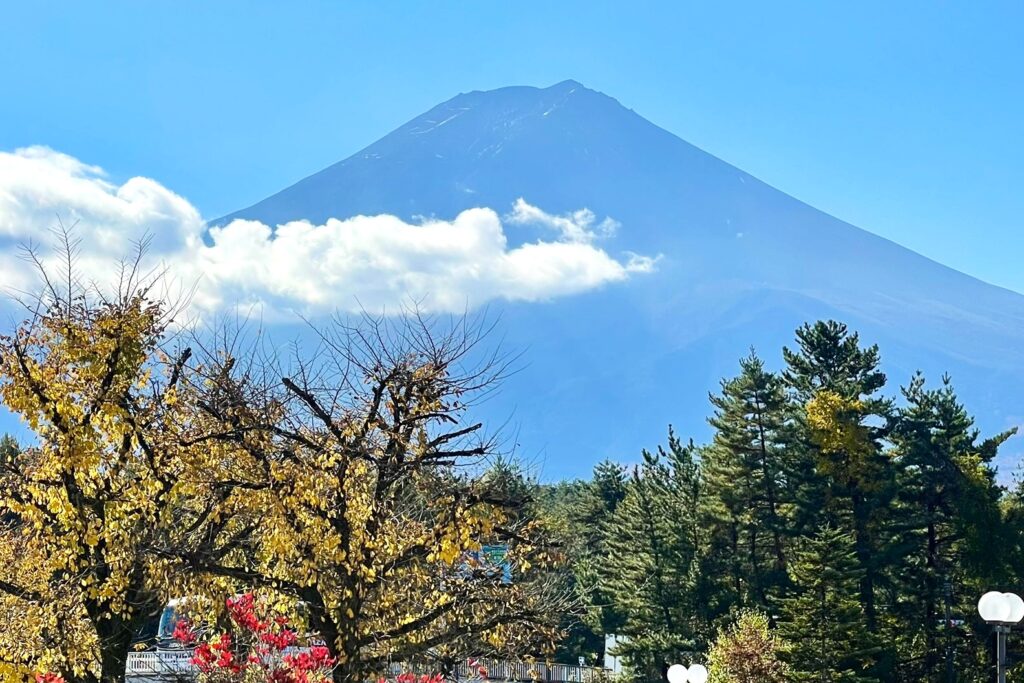Are you traveling to Kyoto, Japan? It’s a beautiful, ancient city with a mix of traditional culture and modern adaptations. While it may not be as big as Tokyo, there are still a ton of things to do and see there, which can make planning your first trip overwhelming. So, I’ve created this Kyoto travel guide to help make it easier!
I visited Japan in the fall of 2024 and did a ton of research for months before I went. These are some of my favorites, as well as some additional spots I didn’t get to, but are popular and highly recommended.
And if you’re traveling all over Japan, be sure to check out my travel tips here and my 2-week Japan itinerary guide here!
This site is part of an affiliate sales network and receives compensation for sending traffic to partner sites. This compensation may impact how and where links appear on this site. This site does not include all financial companies or all available financial offers. See below for full disclosures.

Click the links below to skip ahead to each section of my Kyoto travel guide:
Want to earn free travel? Learn more about one of my favorite credit cards to get started!
The Best Time to Visit Kyoto, Japan
Japan experiences four distinct seasons, each with its own charm and reasons to visit:
- Spring (March to May): This is the best time to see cherry blossoms in Japan, with the peak season in Kyoto typically from early to mid-April. While beautiful, it’s also the most crowded and expensive time to visit.
- Summer (June to August): Summer is a good time for festivals and hiking, but be prepared for hot and humid weather. If there’s an off-season in Japan, this is it.
- Autumn (September to November): This is the best time to visit Japan for fall foliage, with pleasant temperatures and stunning backdrops. Mid to late November is the peak time in Kyoto. It’s also popular, like cherry blossom season, so expect more crowds, but not as many as in spring.
- Winter (December to February): Winter is perfect for snow festivals, skiing, and enjoying the outdoor onsen (hot springs). While you won’t find as much of this in the city, there are plenty of options within an hour train ride or so from Tokyo.
Overall, the best time to visit Japan is from October to May. For fewer crowds and good weather, consider visiting during the shoulder seasons in late spring or early autumn.

How to Get to Kyoto
Technically, there is no airport for Kyoto itself. Instead, you can fly into either Tokyo or Osaka and take the train to Kyoto from there. The best airport near Kyoto is going to be the Kansai International Airport in Osaka. It’s an hour and twenty minutes and 2,200 yen (about $14 USD) to Kyoto on the Haruka Limited Express train.
If you prefer a private car transfer, it’s about the same amount of time to drive to Kyoto.
If you’d rather fly into Tokyo, the two international airports are Narita (NRT) and Haneda (HND). Narita Airport is further out from the city and tends to have more affordable flight options, so it depends on what you value more: time or money.
Pro Travel Tip: Search for deals on flights with Daily Drop Pro. You can search by miles, points, or airline loyalty programs and even save up to 80% on international flights!

How to Fight Off Jetlag
You’re likely going to be dealing with a significant time difference when you land in Japan. If you struggle with jetlag, I’ve got some great tips for you:
- Slowly adjust your sleep schedule leading up to your trip. This sunrise simulator alarm clock can help you get up more easily when it’s darker in the mornings.
- Take a nap on the plane if you’ll be arriving earlier in the day (this memory foam neck pillow, sleep mask, and ear plugs are great for this). If you’re arriving later in the day, try to stay awake for at least the second half of the flight.
- Pack little snacks to munch on between meals to keep your energy up (and the hanger away!). You can also buy tasty snacks at the local stores or markets while you’re there. These reusable bags are great to use for travel and on-the-go!
How to Get Around Kyoto
This section is all about how to get around Kyoto, including local trains, buses, and subways. Public transportation in Japan is very efficient and reliable, and it is a great way to travel from city to city and get around each city.
Ubers and taxis are also available in most places but can be expensive, especially during late-night and peak hours. Because there’s so much to do, a lot of areas are also walkable. Make sure you wear comfy sneakers or sandals that are easy to walk in!
The Shinkansen (bullet train) is really cool and a great way to travel between cities across Japan. Kyoto is an excellent base for you to stay and then take day trips to Osaka, Kobe, Okayama, and Hiroshima.
For easy payment on public transport, get a rechargeable IC card like SUICA or PASMO, which can also be used for purchases at konbini (convenience stores).
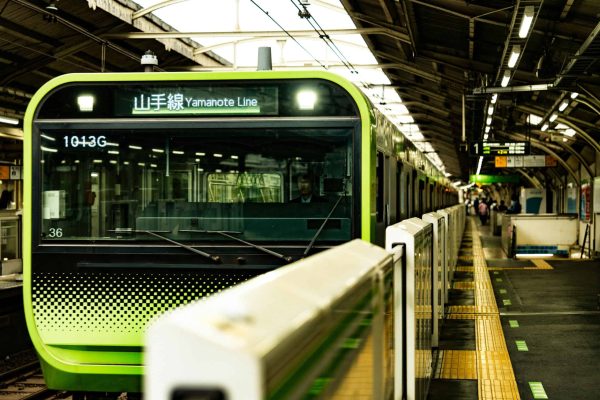
How to Navigate Public Transportation
Navigating Japan’s public transport system can be scary at first, but understanding how to use your tickets and IC cards is key to a smooth journey. For Shinkansen travel, you’ll typically receive two tickets: a passenger ticket and an express ticket. Both must be inserted simultaneously into the entrance gate at the start and end of your trip.
At entry, the machine returns both tickets, but at exit, it keeps them. If you encounter any issues, don’t hesitate to ask the friendly station staff. Your passenger ticket lists your car and seat numbers, and platform signs guide you to the correct boarding areas. Orderly queuing is VERY important in Japanese culture, so pay attention to these signs.
For local travel, SUICA, PASMO, and other IC cards can be easily swiped at the entrance to every subway station. I added my SUICA card directly to my phone, which made tapping in and out of the subway and adding funds incredibly easy.
Check out my other post on Japan travel tips for more info on navigating the trains, subways, and buses.
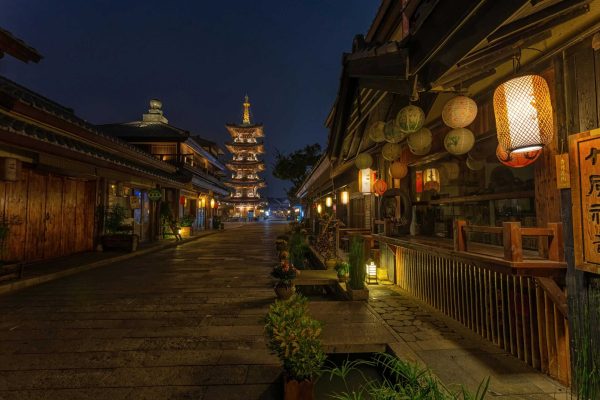
Where to Stay in Kyoto
Choosing where to stay in Kyoto depends on your budget and the area you want to explore the most. We stayed for two days in the Gion area to explore that side of Kyoto and then moved to a different hotel for a night in Arashiyama, the northern part of Kyoto.
Here are the different types of accommodations in Kyoto:
- Hotels: From Western-style to traditional Japanese-style.
- Ryokans: Traditional Japanese inns offering a cultural experience with tatami rooms, often with onsen access and kaiseki (set, multi-course) meals.
- Minshuku: Family-run guesthouses (bed-and-breakfast style), typically more budget-friendly than ryokans.
- Hostels: Ideal for budget travelers and those seeking a social atmosphere.
- Capsule Hotels: Very budget-friendly hotels offering small, pod-like sleeping spaces.
For a truly authentic cultural experience, I recommend spending at least a couple of nights in an onsen hotel or ryokan. Your whole stay is an experience to enjoy and relax rather than just a place to rest your head at night.
A few notes about booking accommodations in Japan:
- Not all hotels have air conditioning available year-round. I visited in the fall, and they had already switched the central air to heating instead of cooling, even when the weather wasn’t that cold yet. You can ask the front desk for a mini fan to use during your stay.
- Always check if you’re booking a traditional-style or a Western-style room. Many traditional rooms include tatami mats on the floor, which are actually more comfortable than they sound.
- If you have tattoos, you may not be able to visit most onsen as they are still considered taboo. In that case, look for hotels with a private onsen.
Your FREE Carry-On Bag Travel Guide
Pack smarter and more efficiently with this FREE carry-on bag travel guide. Learn how to pack essentials, keep electronics safe, and more on your next travel adventure!
Hotels in Kyoto
Kyoto may not be as big as Tokyo, but it isn’t exactly easy to walk from one side of the city to the other. Public transport is great, but you may want to stay in at least two different locations. That way, you can do more while staying relatively close to your home base. Here are some popular areas of Kyotothat are good for sightseeing and activities:
- Gion
- Lower Higashiyama
- Nakagyo Ward
- Arashiyama
As far as specific hotels in Kyoto, we stayed two nights at the APA Hotel Kyoto Gion, on a main street between Maruyama Park and Kamo River. The room was a bit small, but the location is excellent and very walkable.
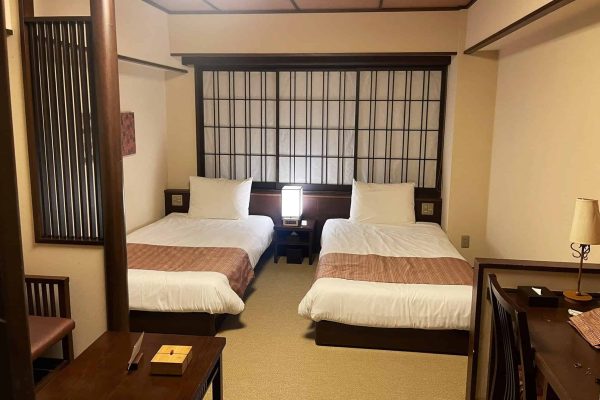
We then moved over to a beautiful onsen hotel called Kyoto Arashiyama-Onsen Kadensho. It has bigger, Western-style rooms, but overall it’s more traditional, so you’ll need to remove your shoes when walking around the hotel. There’s a public onsen and private onsens, too, which I highly recommend you try!
You can book your room with meals included or excluded. I recommend at least doing the dinner, which is multiple courses (kaiseki), and a great experience to enjoy after relaxing in the onsen.
Other Accommodation Options
If you prefer vacation rentals, VRBO has plenty of options in Kyoto. Stay in a modern city apartment or a traditional home in a more suburban area. You’ll have more space and privacy, and it’s often more affordable than hotels for longer stays or group travel.
TrustedHousesitters is a unique way to stay in local homes and immerse yourself in the local experience. It connects homeowners with travelers willing to care for their homes and pets in exchange for much more affordable accommodations than a hotel. Use my special discount code, ABUNDANT25, for 25% off new annual memberships!
Things to Do in Kyoto, Japan
There are so many cool things to do in Kyoto, from traditional tea ceremonies and geisha shows to exploring parks, temples, and shrines, shopping, and eating all the delicious food! I’ve tried to choose the most popular sights and activities for this Kyoto travel guide, including things I did on my trip that I thoroughly enjoyed.
If you’re staying for at least 3 or 4 days, you should be able to see and do a lot.
Go On a Food Tour
I always recommend that you go on a food tour on your first day in a new destination. This is a great way to get a feel for the town and figure out what you want to spend the rest of your time doing. If you have a local guide, you can ask them for recommendations on things to do in Kyoto and other places to eat.


Walk Through Nishiki Market
Nishiki Market has a lot of food stalls and shops to buy souvenirs. You could easily spend hours at this market, and that’s just what we did! Explore on your own or join a walking tour with a local guide.
We enjoyed fried chicken, king crab, taiyaki (red bean paste dessert), sake, and some INCREDIBLE wagyu beef skewers. I definitely went back a few times for more of the wagyu; it was so juicy and just melted in my mouth. We also did some shopping and bought beautiful chopsticks and hair sticks.
Use your phone data while you travel without racking up a high phone bill. Click the link to learn more and get a 5% discount on your purchase!
Explore the Shrines & Temples
Buddhist temples and Shinto shrines are integral to Japanese culture, and you’ll find them everywhere. While both are places of worship, they have distinct characteristics. Buddhist temples often feature large Buddha statues and incense burners, and may have a pagoda. Shinto shrines are recognized by their torii gates and are often dedicated to specific kami (Shinto deities).
Here are a few popular shrines and temples to see in Kyoto:
- Fushimi Inari Shrine
- Kennin-ji Temple
- Yasaka Koshin-do
- Kyomizu-dera
- Daihikaku Senkōji
- Nonomiya Shrine
- Giōji Temple (Moss Garden)
We did the walking tour to Fushimi Inari shrine with a small group led by a local, Nobu. She was so knowledgeable, and took us up a “secret” path up that went through a big bamboo forest with mini shrines on the way. There are a lot of stairs to get to the shrine! Wear comfortable shoes and be prepared for a workout.




When visiting these sacred sites:
- Dress modestly, covering your shoulders and knees, and remove your shoes if indicated at the entrance. Pack a large scarf or shawl with you; linen fabrics are best for warm weather, and cashmere is best for cooler weather.
- Follow purification rituals at the entrance, such as washing hands and mouth at the provided water fountain.
- Bow slightly before entering the main hall. At shrines, do not walk through the middle of the torii gate. Walk through toward the left or the right side.
- For prayers or offerings, toss a coin into the offering box, bow twice, clap twice, and then bow once more. You may make a wish or say a prayer after your offering.
- Respect photography rules. Look for signs indicating where photos are allowed.
Go to a Geisha Show in Gion
You can’t visit Kyoto without going to Gion Corner and attending a geisha show. The show was very interesting, with traditional music, dancing, and a tea ceremony. We actually booked a special ticket that included tea and cookies.
It was a little intimidating because we didn’t know we were the only ones being served, and there were special rules about how to drink the tea and eat the cookies. I do recommend going to a show and booking the special seats with the tea, if you can, though. It was a very cool experience!
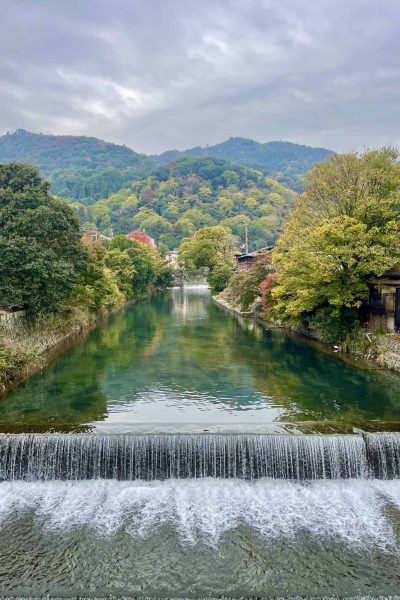
Explore Arashiyama
Arashiyama is known for its bamboo forest, but honestly, I think the “secret” one near Fushimi Inari (see above) is more enjoyable and a lot less crowded. So, we skipped that and headed straight to Togetsuyoko Bridge for gorgeous views of the fall foliage next to the Katsura River.
There are also several food vendors here. I highly recommend the okonomiyaki pancakes with soba noodles – they were SO yummy!
Spend your morning or afternoon enjoying the sights from the Sagano Railway & Hozugawa River Boat Ride. Ride the railway upriver, and the boat will take you back down to Arashiyama. Then, stop by the Monkey Park on your way up to Daihikaku Senkōji Temple, a peaceful little temple with incredible views of Arashiyama.
Are you loving The Abundant Traveler® content? Please support it!
If you’re loving what you’re seeing and learning, please consider supporting with a donation so I can continue providing this free for travelers like you. It could be as little as a cup of coffee or an Aperol spritz. I appreciate your support!
What & Where to Eat in Kyoto, Japan
Japanese cuisine is a huge reason many tourists visit Japan, with diverse flavors and culinary experiences that can’t be found anywhere else. Don’t miss out on trying some amazing foods such as sushi, ramen, kara-age (fried chicken), tempura, udon/soba, curry rice, yakitori, and okonomiyaki (to name a few). And, of course, you have to drink some sake and matcha, too.
You’ll see various dining experiences in Kyoto, including Kaiseki (a traditional multi-course meal), Teishoku-ya (serving “set” meals), and Izakaya (Japanese-style pubs). There are many more types, and a lot of restaurants specialize in one kind of food, like soba, tempura, or sushi.
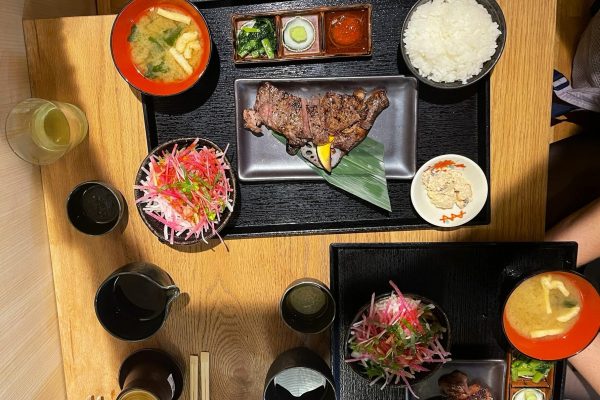
Use the Tabelog app to find places to eat based on local reviews rather than Google Maps. The rating system is stricter, so a 3.5-star rating can be equivalent to a 5-star rating on Yelp or TripAdvisor. Don’t miss out on a fantastic restaurant because you think it has a “bad” rating!
Here are some of my favorite spots to eat and drink in Kyoto, Japan:
- 7-Eleven, Family Mart, and Lawson (everywhere!)
- Nishiki Market
- Gion Gombei
- Food vendors by Togetsuyoko Bridge
- Arashiyama Miyoshitei
- 京の酒カフェ 十三八 Sake Bar
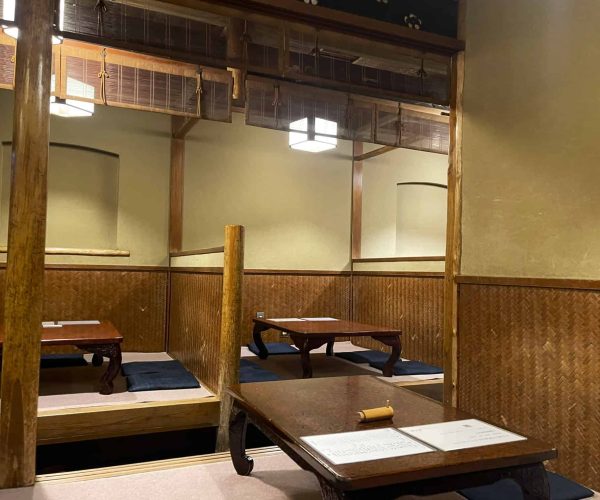
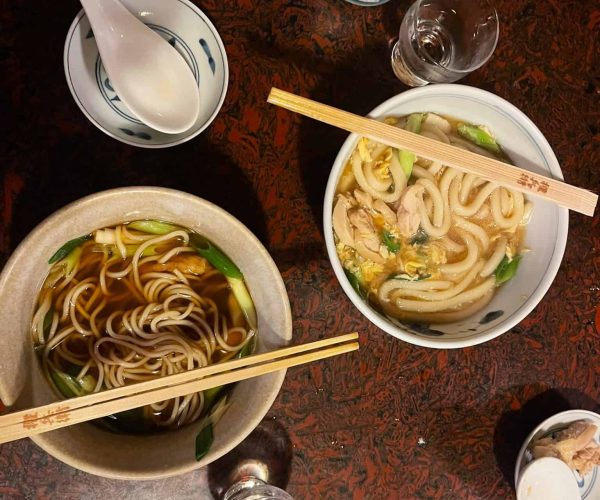
More Tips for Visiting Kyoto
Learn Some Japanese Phrases Before You Go
Before your trip, try to learn some Japanese to help you order food, ask for directions, and buy things in the shops run by locals who don’t speak a lot of English. In general, it’s considered good etiquette to make an effort at the local language, no matter where you travel.
If you’d like to learn more of the language, including how to read Japanese characters like kanji and hiragana, start learning now with Rosetta Stone!

Currency & Cash
Japan’s currency is the yen (¥). While credit card acceptance is increasing, many places prefer cash, and some won’t take credit cards at all, especially outside major cities. ATMs accepting foreign cards can be found at most 7-Eleven stores and Japan Post offices. When withdrawing cash or paying by card, always select the local currency, NOT your home currency!
It’s always a good idea to have small bills (10 yen and 100 yen coins, as well as 1,000 yen notes), as many ticket and vending machines will not accept larger ones (especially 5,000 and 10,000 yen bills). I recommend getting a coin purse to keep track of all the coins you’ll get back as change!
On another note, tipping is not customary in Japan and can sometimes be considered rude. Excellent service is the norm and is not expected to be rewarded with extra payment. Some tour guides do appreciate tips, but it’s best to ask first. And always hand over (or accept) money with two hands.
If you’re planning a trip across Japan, check out my other post on my 2-week Japan itinerary. It includes Tokyo, Kyoto, Osaka, and more!
Bring a Credit Card with Travel Perks
I always travel with one or more of my favorite credit cards for travel perks. I typically look for things like low or no foreign transaction fees, discounts on airport lounge access, and VIP customer service for booking exclusive events and experiences.
And, of course, I want one that has an amazing earning system that allows me to get points or miles with every purchase. I’ve saved thousands of dollars on flights and hotels using travel credit cards like these!
Check with your credit card company before you go to see what kind of foreign transaction fees they charge. And be sure to let them know when and where you’ll be, so your card isn’t declined for making a foreign purchase.
Daily Drop is my favorite newsletter that teaches you how to make the most of your points and miles in under 5 minutes a day. Learn how to earn and redeem miles and points, find cheap fares, and more!
Ready to book your trip to Kyoto, Japan?
Hopefully, this Kyoto travel guide gave you some good ideas for your own adventure! My number one tip for you: as tempting as it can be, don’t try to cram everything in.
Take your time, stick to a few sights per day, and leave yourself time to wander and explore. That’s how I found some of the delicious food spots and cute little shops for souvenirs and keepsakes.
Have a fantastic time in Kyoto! And then come back and let me know your favorite spots in the comments below.
Want to read this post later? Save it on Pinterest!
Looking for more Japan travel tips and ideas? Check out my favorite travel products and some of my other posts below!
User-Generated Content (UGC) Disclosure: The responses below are not provided or commissioned by the bank advertiser. Responses have not been reviewed, approved, or otherwise endorsed by the bank advertiser. It is not the bank advertiser’s responsibility to ensure all posts and/or questions are answered.
Disclaimer: Some of the links on this page are affiliate links, which means that, at no extra cost to you, The Abundant Traveler may earn a small commission. Using these links is a huge way to support me, and these will help keep the blog running and free for everyone to enjoy.
All my reviews and opinions are based on my own experience, which may not be the same for everyone. If you choose to use them, then thank you for your support.
Advertiser Disclosure: The Abundant Traveler is part of an affiliate sales network and receives compensation for sending traffic to partner sites, such as MileValue.com. This compensation may impact how and where links appear on this site. This site does not include all financial companies or all available financial offers. Terms apply to American Express benefits and offers. Enrollment may be required for select American Express benefits and offers. Visit americanexpress.com to learn more.
The content on this page is accurate as of the posting date; however, some of the offers mentioned may have expired.
Editorial Disclaimer: Opinions expressed here are author’s alone, not those of any bank, credit card issuer, hotel, airline, or other entity. This content has not been reviewed, approved, or otherwise endorsed by any of the entities included within the post.






